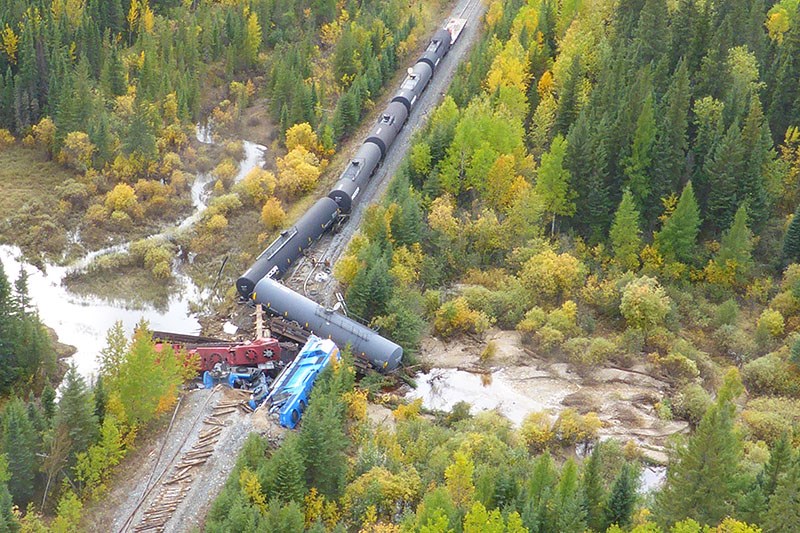The spot where a Hudson Bay Railway (HBR) train derailed last Sept. 15, killing the conductor and seriously injuring the engineer, had been identified as a trouble spot prior to the crash and Churchill-Keewatinook Aski MP Niki Ashton is asking the federal transport minister for a full inquiry into the incident.
A Jan. 9 directive from Transport Canada rail safety inspector Judith Harris to HBR, which had just changed hands from former owner OmniTrax to current owner Arctic Gateway Group a couple of weeks before the derailment, said that inspections conducted from Sept. 10-13 identified an issue with water drainage at mile 99.5 and the Wekusko subdivision. Water had reportedly been observed on the rail and a speed restriction of 10 miles per hour was put on a Via passenger train. Corrective measures were then taken to improve the rail condition at mile 99.5 and the speed restriction was removed. However, Harris says, “no subsequent warning of the situation was communicated to employees operating in the area, and no preventative measures, such as providing ongoing monitoring of the culvert, were implemented to protect these employees.”
A train transporting propane went off the rails Sept. 15 about 17 kilometres southwest of where the railway crosses Highway 6 near the junction with Highway 39. The crash was spotted around 5:30 p.m. by a helicopter passing overhead and Wabowden RCMP officers were notified. Police arrived at the crash scene by 7 p.m. and other emergency responders were dispatched, including Thompson Fire & Emergency Services personnel, who set out on the 150-kilometre journey to the crash scene around 6 p.m.
The Teamsters union, to which 38-year-old conductor Kevin Anderson and the 59-year-old engineer belonged, said Oct. 1 that Anderson, who was pronounced dead at the scene, died from a broken bone that bled for nine-and-a-half hours because paramedics weren’t allowed to enter the scene.
The provincial government said in a November statement that first responders had to work in a pool of fuel from ruptured diesel tanks with power still running to the locomotive as they attempted to extricate the two men.
Harris’s directive to HBR said that the company failed to establish a hazard prevention program as required by Canadian occupational safety and health regulations, that it did not develop emergency procedures to deal with train accidents, including those in remote locations with limited or intermittent radio services, and that it failed to ensure that there is a way to transport employees with injuries or illnesses from remote locations or a way for them to quickly summon an ambulance or other means of transportation.
“This accident was discovered by chance and reported to RCMP approximately 1.5 hours after the accident by a commercial helicopter pilot in the area,” wrote Harris. “It was many more hours before specialists arrived on the scene to assist the casualties with first aid, pain relief and a suitable means of transportation to a hospital.”
The directive gives HBR until May 1 to correct the contraventions of the Canada Labour Code.
Murad Al-Katib, president of AGT Foods, which is one of the partners in the Arctic Gateway Group, told CBC that the company was appealing the Transport Canada directive and that the company believes there are “factual inaccuracies” in the order.
Anderson’s sister said his family was glad that Ashton was requesting an inquiry to uncover answers and ensure that what happened to her brother doesn’t ever happen to anyone else. She said if accidents occur, help should be on the way in a timely manner so that injured people have a chance to live.




